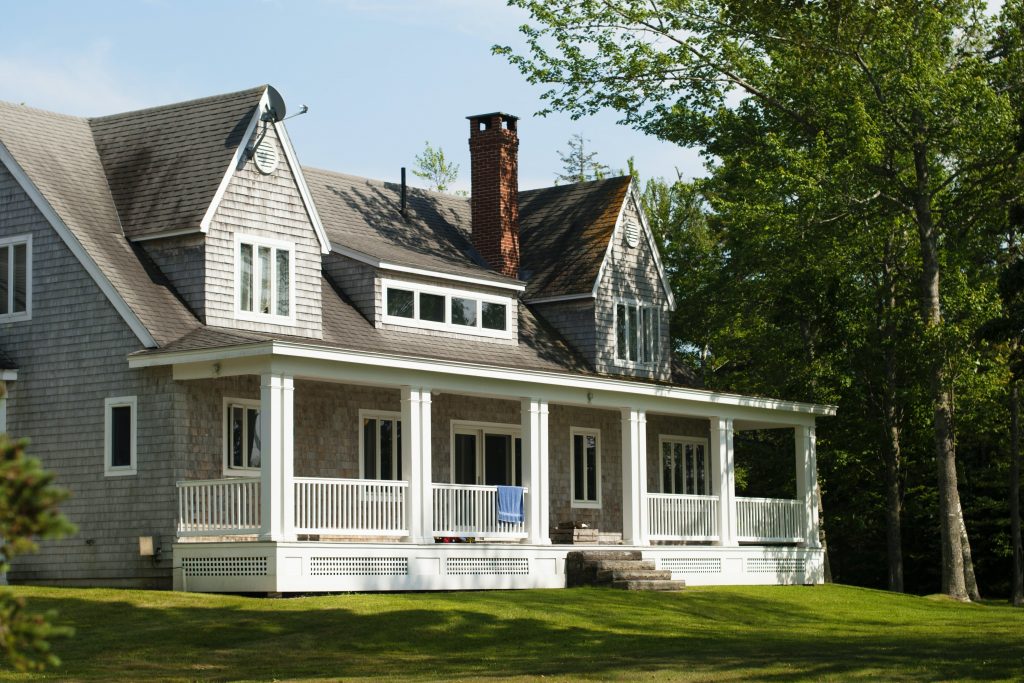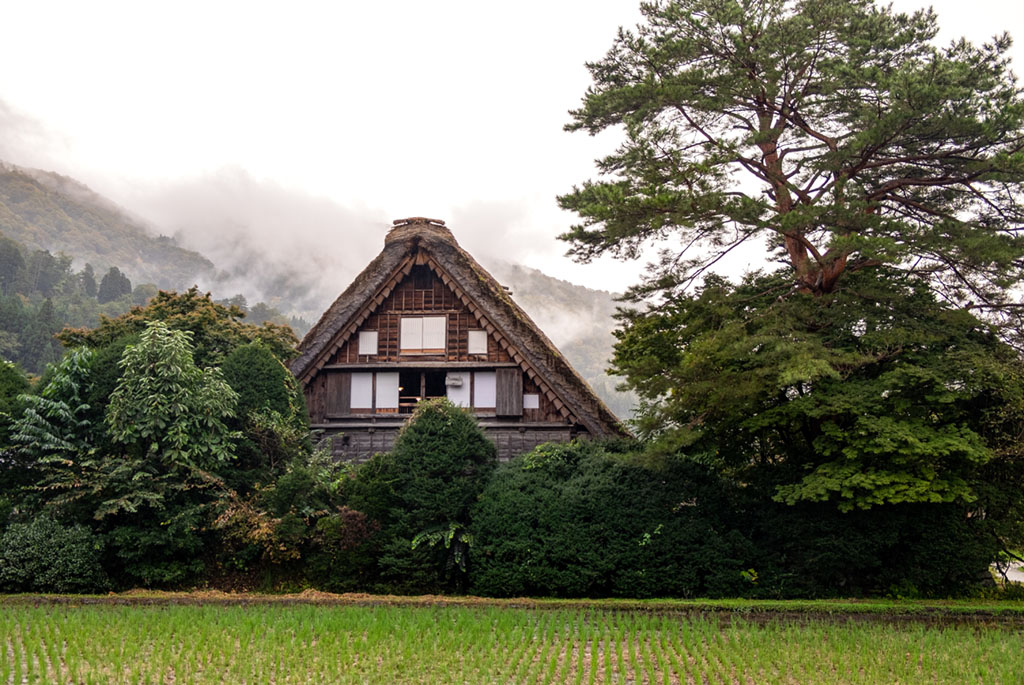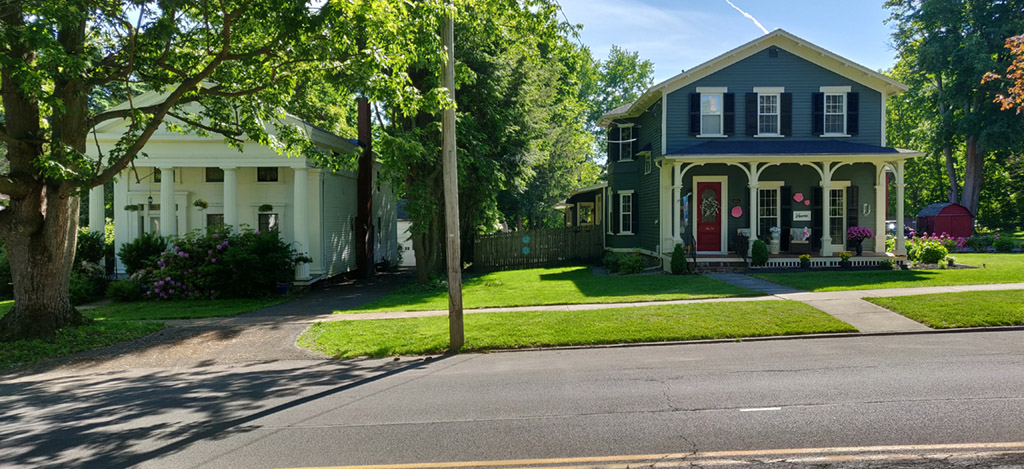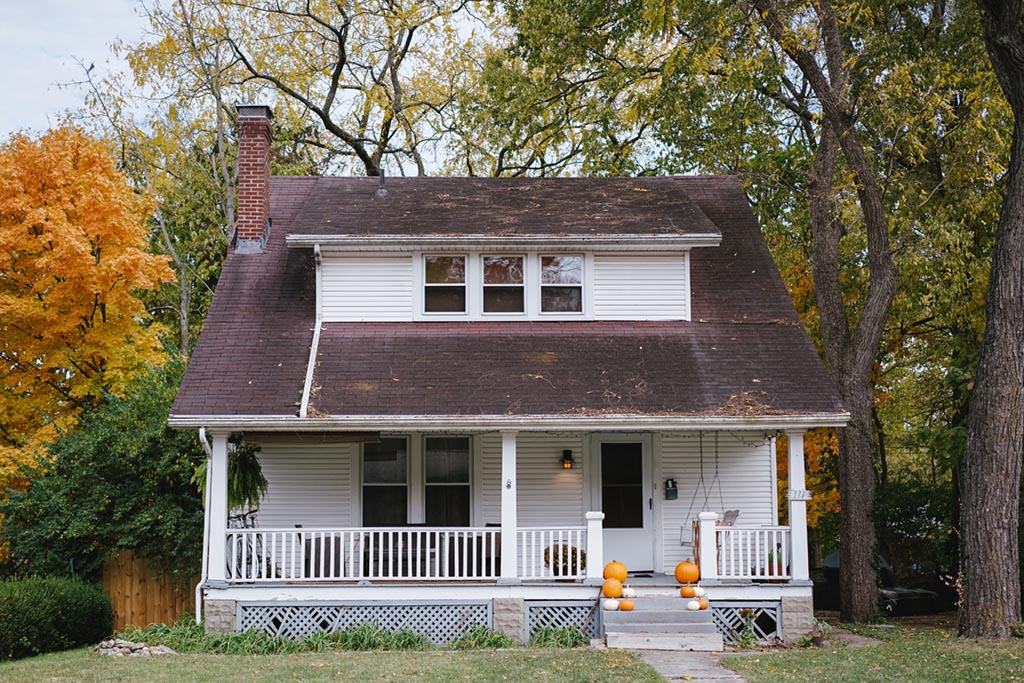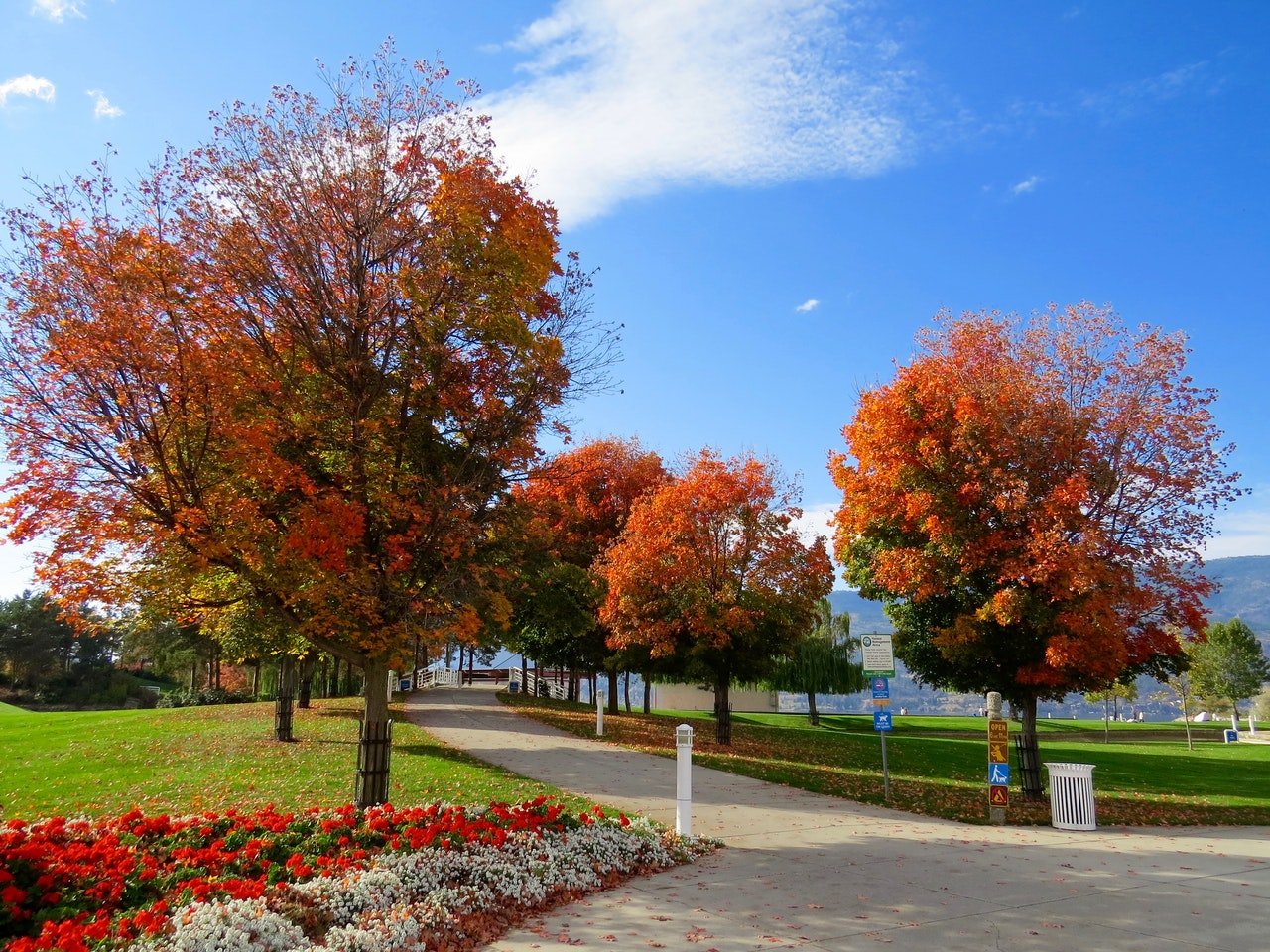If you’re like most people and want to enjoy the outdoors without the hass... Read More
- Home >
- How To Plant Trees To Conserve Energy for Summer Shade
How To Plant Trees To Conserve Energy for Summer Shade
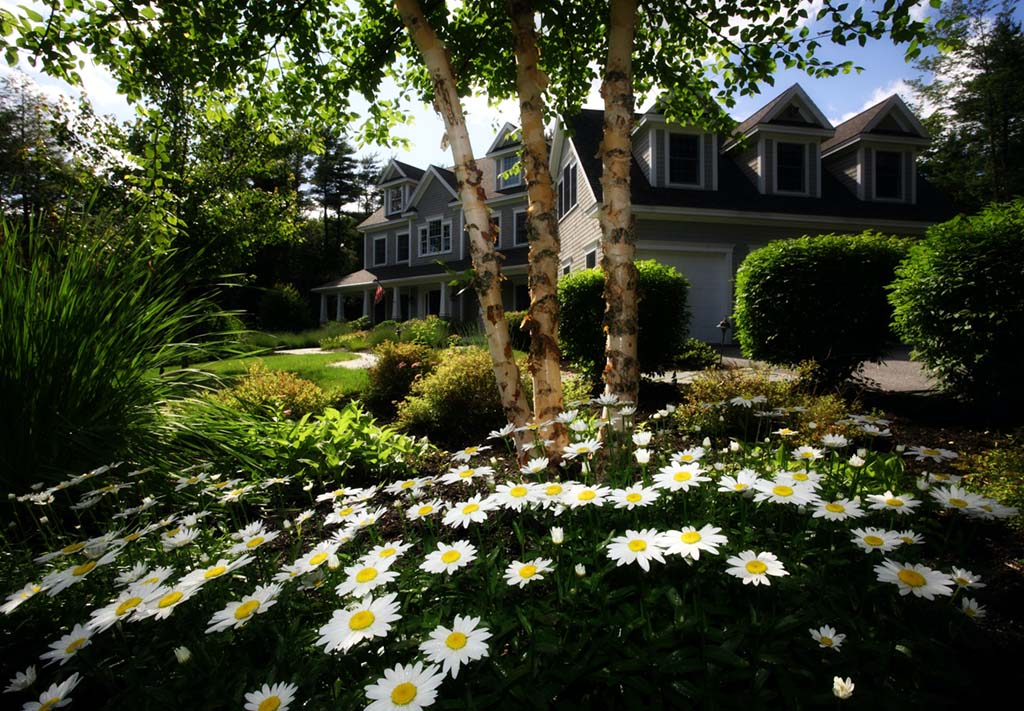
Many people plant trees in their yards to make their properties more attractive. Others recognize that trees are a vital component of their local ecosystem. Yet few homeowners realize that planting the right tree in the right location can save them money by reducing their home energy bills. In the sections below, we’ll show you how to plant trees to conserve energy, create summer shade, and block chilly winter winds. But first, let’s start by exploring the ways in which trees aid in energy conservation.
Trees Create Summer Shade
Trees help conserve energy by mitigating extreme temperatures. In the hot summer months, excessive sun exposure raises the internal temperature of your home throughout the day. This forces your home’s cooling system to run frequently, which raises your energy bill. Planting trees on your property helps shade your home from the sun and prevents your cooling system from working overtime.
Trees Block Winter Winds
In the winter months, strong chilly winds blow against the exterior of your home, making it more difficult to keep your indoor living spaces warm. This means you run your heating system more and pay a higher price to keep your home comfortable. Planting a row of trees to block the frigid winter winds keeps the cold air out of your home. But in order for trees to keep your house cool in the summer and warm in the winter, they need to grow in a strategic location.
Where to Plant Trees for Energy Conservation
To decide where you should plant your trees for maximum energy conservation, let’s assume your home is in the northern hemisphere. In the northern hemisphere, it’s rare for the sun to shine directly from above. Instead, the sun is often closer to the southern horizon, meaning that it casts its rays towards the north. The exact angle of the sun changes through the seasons.
With that orientation, a tree on the south side of a house would generally stand between the structure and the sun for most of the day. This is the ideal placement for shading your home in the summer.
It’s also common in the northern hemisphere for the cold winter winds to come from the north or northwest. Planting a row of windscreen trees along the north or northwest edges of your property helps minimize the amount of cold air that gusts against your house.
Now that you have a grasp on the fundamentals of tree energy conservation, let’s develop an energy-conserving tree strategy for your property.
How to Plant Trees to Save Energy
The last section gave us a general idea of where to plant trees to conserve energy. However, applying an energy-saving approach to your tree planting is a bit more complex. While those broad climatic tendencies are relevant to how you plant your trees, the specific characteristics of your property are important as well.
Before you begin planting, you need a comprehensive understanding of the unique weather patterns and environmental factors on your lot. Below are a few steps to help you get started.
1. Select the best locations
Conserving energy through tree planting is not always as simple as planting a shade tree in front of your house’s southern façade. Instead, you should take a detailed approach that considers the existing features of your landscape and your intended outcome for your planting design. Below are the factors to consider:
Your property’s needs
Although energy conservation through tree planting is a smart idea, it might not be necessary for every property. For example, your property may already have large trees on its south side. In that case, planting another tree in that area would likely be redundant and the shade produced by the existing trees may prevent any new trees from growing in the first place.
Similarly, you should determine whether you need a windbreak. Though it may seem obvious, you shouldn’t plant a dense hedge if you already have a fence or wall playing the same wind screening role.
Your property’s features
Before adding any trees, you need to decide whether new trees will conflict with any of your existing property. For example, any tree large enough to shade your home needs a lot of space above and below the ground to grow. If your landscape does not have adequate space for your shade tree once it reaches maturity, then planting it is not advisable.
Additionally, planting trees too close to a house can cause a multitude of issues. The same goes for other structures such as fences, sheds, and utilities. Avoid those issues by understanding the mature size of your trees before planting. Otherwise, years later, you might find that your trees are compromising the structural integrity of your home.
Nearby properties
In addition to recognizing the role your property plays in tree planting, you must also consider the properties nearest to you. These neighboring lots can influence weather patterns and the environmental conditions of your property.
Perhaps the buildings to your north already do an effective job of blocking the winter wind. Or maybe one of your southerly neighbors has tall trees or buildings that cast shade on your home. In either case, those structures change the sun and wind patterns on your land.
Blocking winter wind also takes some extra attention in this context. While there are general wind patterns for every part of the world, the wind on your site may be very different.
For instance, the position of buildings can create unnatural wind patterns that a regional wind diagram would not represent. This is another reason why it’s important to understand the distinct nature of your property and neighborhood before planting anything.
Design considerations
All landscape designs are a matter of function and aesthetics. You should consider how your new tree will affect the experience of living in your home and landscape. As always, you need to balance several elements by first determining your priorities. To do so, ask yourself questions like these:
- Will this new shade tree block light from my previously sun-filled rooms?
- Will a dense evergreen windscreen affect my curb appeal?
- How will new planting affect the use and enjoyment of my yard?
2. Study sun, shade, and wind patterns
By now, you know that you need to evaluate the individual traits of your property before you can plant trees for energy conservation. Your next step is to understand how to do that.
To be most effective in your tree planting, you must study the sun, shade, and wind patterns of your property. This task requires a keen eye and some patience. The need for patience comes from the fact that sun patterns can change a lot throughout the year.
In the height of summer, the sun is typically higher in the sky, and rises and sets at more northern portions of the horizon. In the winter, the opposite is true.
The two terms that describe the sun’s movement and location are the sun’s azimuth and altitude. Azimuth refers to the horizontal position of the sun, while altitude is a reference to how high in the sky the sun is.
If you’ve never paid attention to the azimuth and altitude of the sun, you might be surprised by how different they can be throughout the year. This change can have a major influence on how much sun your home receives in the various months of the year.
Because of that fact, you ought to choose your shade tree’s location during the summer. By making that decision in the summer, you have a better idea of how your new tree will cast shadows on your home.
The same level of study applies to creating windscreens. Take a few days to study where the wind comes from in your yard. Studying wind patterns over days, weeks, and months makes it less likely that you’ll choose your windscreen’s location based on an uncommon weather pattern.
3. Protect the vulnerable parts of your home
Naturally, there will be some parts of your home and landscape that need more protection than others. Here are a few features that you might want to protect more than others:
| Features that may need sun protection | Features that may need wind protection |
| Large windows | Large windows |
| Hardscape areas (driveways, patios, etc.) | Hardscape areas (with late-season uses) |
| HVAC units/equipment | Delicate plants |
Large windows are often a selling point for homes. But they’re also a part of your house that can change the interior temperatures of your rooms significantly.
In the summer, a large window allows light to flood in, making the room hotter. Windows are also one of the least insulated parts of your home. That means that in winter, they’re a prime spot for cold air to enter. Trees inhibit some of that sun and wind from hitting your largest windows.
Regarding energy conservation, it’s also a good idea to prevent your HVAC equipment from sitting in direct sunlight. The added heat from the sun makes it more likely that your system will overheat as it operates.
Lastly, there are some areas you should protect from sun and wind for reasons beyond energy conservation. For instance, hardscape areas can become extremely hot to the touch when they lie in full sunlight. On the other hand, windscreens can make outdoor spaces much warmer in the cold months and give protection to early blooming plants that would otherwise succumb to wind damage.
4. Choose the right tree
Once you have an idea of where you want to plant your trees for either shade or wind protection, you need to pick the right tree species. Some tree species are better for shading a home, while others thrive as windscreens.
Deciduous trees create shade
To shade your house, opt for deciduous trees. Here are two reasons why deciduous trees are the ideal choice:
- They often have broader leaves more capable of blocking sunlight.
- After losing their leaves, deciduous trees allow sunlight to reach your home in winter.
In choosing a tree, you also want to pick one that will grow tall enough to send shadows over your home. Here are a few types of deciduous trees to consider:
- Oaks
- Maples
- Lindens
- Sycamores
- Tulip trees
Once your shade tree matures, be sure to remove some of its lower limbs over time. Removing these lower limbs allows a clear view out of your house and encourages sunlight to enter your window in winter when the sun shines at a lower angle.
Evergreen trees form windscreens
In contrast to a tree for shade, trees meant for wind screening should be evergreen. Again, there are a few reasons for this:
- Evergreen foliage persists for the entire year.
- They have dense branching habits for greater protection.
Planting a deciduous windscreen will not be a successful plan. As soon as the leaves fall, the wind passes through your hedge freely. That means that you’ll have minimal wind protection when you need it most.
Here are some evergreen varieties that you may want to use:
- Arborvitaes
- Cedars
- Spruces
- Firs
- Pines
Take advantage of the fact that many evergreens respond well to pruning. That is why these species are so popular in parterre gardens and clipped hedges. When using evergreen for a windscreen, you can prune them so that their branches grow more densely. That will make your windscreen more useful for blocking strong winds.
Pro Tip: Use Trees to Create Your Ideal Microclimate
When you create shade or deter wind, you’re creating what’s called a microclimate on your property. A microclimate is a small area that has different environmental qualities than the larger surrounding area.
Creating microclimates is a common goal in landscape design. Through careful placement, designers use plants and garden structures to make areas more comfortable than they would normally be.
As you plant trees to conserve energy, remember that you have the opportunity to make your outdoor spaces more livable, even in hot and cold spells. Let’s walk through an example of a well-designed microclimate.
Imagine that you have an open patio space in your yard. In its current state, that patio has no surrounding plants, fences, or walls. Without those defining elements, this patio space will take on the climatic conditions of whatever the current weather pattern happens to be.
If the sun is strong in the summer, the patio will become overheated and unpleasant. In the colder months, the wind will whip through, making the temperature unbearably cold.
Now imagine that someone planted rows of evergreens on the north and west side of the patio. Then picture one or two large shade trees growing on the south side of the patio.
With that strategically placed plant life, the experience of sitting on that patio becomes more pleasant year round. In the summer, the shade trees prevent the hardscape patio surfaces from overheating, making it a lovely place to sit in the hot weather. In late fall, the windscreen keeps the patio a bit warmer so that you can enjoy sitting around a fire pit at night.
By designing microclimates on your property, you not only save on heating and cooling costs, you also make the thought of spending quality time outdoors a bit more enticing.
More Landscaping Advice
Related Content
-
Top 10 Mosquito Killers – Reviews & Buyer’s Guide
-
7 Best Expandable Hoses For The Garden – Reviews & Comparisons
Heavy rubber hoses that are cumbersome to handle and lay around on the gro... Read More
-
5 Best Hose Timers You Can Buy Today
Hose timers automatically switch your garden hose on or off without you ha... Read More
-
Best Soil Moisture Meters – Buying Guide & Recommendation
Are your plants struggling to thrive despite your best efforts to meet all... Read More
